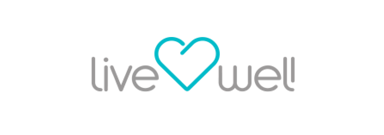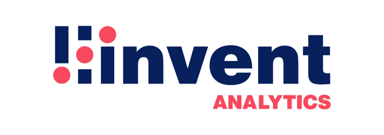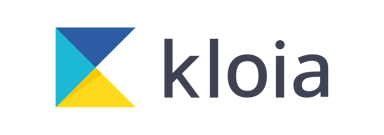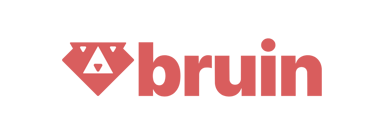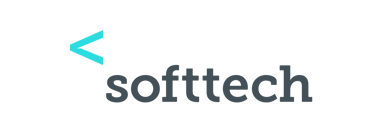Talent Analytics
Talent analytics is really about making smarter decisions using actual data. It brings together information from places like performance reviews, hiring trends, training results, and employee surveys, and helps you spot what’s working and what’s not.
Maybe some teams are good because of how they’re managed, or maybe one hiring source consistently brings in stronger candidates.
When you can see those patterns clearly, you’re able to make more informed calls, address issues early, and set your people and the business up for success.
Rather than waiting for turnover to happen or waiting for a problem to be raised, talent analytics helps you spot these issues early. It gives you the ability to act proactively.
You can see trends before they become problems whether that’s identifying high performers who need more development, figuring out where people are leaving, or understanding what’s impacting engagement.
With tools like AI and machine learning, the insights you can gather are getting even more predictive. You might even be able to spot potential skill gaps or anticipate turnover before it happens, all with data that backs up your decisions.
Why Talent Analytics is Important
Talent analytics gives you a clearer view of what’s really happening with your people. 📌
It lets HR teams predict things that directly impact business performance like why your top performers are leaving, which recruitment sources are bringing in the best talent, or how training programs are on productivity.
Talent analytics is also about making sure your strategies align with the broader goals of the business. Executives can make smarter decisions about things like workforce planning, managing costs, and investing in the future by using data.
Benefits of Talent Analytics
When talent analytics is put to good use, it has many benefits 👌:
To start with, it helps you hire smarter. When you know what makes your top people great, you can look for those same traits in new candidates. That way, you’re bringing in people who are actually likely to succeed in them.
It’s also great for spotting people inside the company who are ready for more. And if someone’s quietly thinking about leaving, the data can sometimes flag that early so you can step in and try to keep them around.
When it comes to employee engagement, analytics makes things way clearer. You stop guessing about what motivates your team and start seeing real patterns. Maybe it’s just giving people more flexibility, offering better feedback, or creating more opportunities for growth. Sometimes, even small tweaks can totally change how people show up and feel at work.
It also helps with training. Instead of sending everyone through the same workshops, you can actually tailor learning to what people and what the company need. That way, your time and budget aren’t wasted.
And all this has a big impact on lower turnover, better performance, fewer missed opportunities. But maybe most importantly, talent analytics gives HR a stronger voice. When you have real numbers to back up your ideas, it’s a lot easier to get buy-in from leadership and make sure people decisions are part of bigger business moves.
Types of Talent Analytics
Recruitment Analytics
Recruitment analytics looks at what’s going on in your hiring process. It tells you how long it takes to fill a role, how much you're spending to make a hire, and which job boards or platforms are actually bringing in solid candidates.
It helps you spot patterns. Maybe some roles always take longer to fill, or maybe your best hires tend to come from employee referrals rather than job ads. You can adjust how you hire when you start noticing those things. This saves a lot of time and money.
It’s also helpful for seeing where people are in the process. Are they following up after the first interview? Are your job descriptions too vague? The data can point you in the right direction.
And if you're hiring for tough-to-fill roles like really niche or specialized ones, analytics can show you where you're actually finding quality people, so you’re not wasting time or budget in the wrong places.
Performance Analytics
Performance analytics is about understanding what helps people do great work and what gets in the way.
It’s not just about looking at performance reviews or ratings. It’s about asking deeper questions: Who’s consistently doing well, and why? Is it their skills? Their manager? The team they’re on? Did they go through a training that actually helped? Are they in an environment where they can focus and feel supported?
When you look at all that together, you start to see what’s really driving good (or bad) performance. And once you know that, you can actually do something about it.
It’s also a way to spot bias. If one manager always gives high ratings and another is harsh, or if certain groups are being judged differently, the data helps call that out.
Engagement & Retention Analytics
Engagement and retention analytics looks at why people stay and why they leave. It’s not just sending out a few surveys. It means paying attention to what people are saying in exit interviews, noticing patterns in how long they stick around, and watching for signs when someone’s starting to check out mentally even if they haven’t quit yet.
Sometimes, the data can even tell you who’s likely to leave before they’ve even started looking. Maybe their pay hasn’t kept up with market rates, maybe they’ve been passed over for promotion a few times, or maybe they’ve got a long commute.
But there’s no one-size-fits-all answer to engagement. For one company, it might be all about giving people chances to learn new things. For another, it might be flexibility, good managers, or just feeling appreciated.
The financial impact of improved retention can be big. Even small improvements in retention rates yield significant savings.
Learning & Development Analytics
Training’s important, but how do you know if it’s actually helping? That’s where L&D comes in. It gives a clearer picture like who's finishing the training, if it’s sinking in, and whether it’s making any real difference in how people work. It also shows us where people might still need support.
Modern L&D analytics links learning activities to business outcomes, demonstrating the ROI of development investments. For example, it can show how sales training correlates with increased revenue or how leadership development impacts team performance.
Predictive L&D analytics helps figure out which employees would benefit most from specific development opportunities. It suggests personalized learning paths to help them grow by looking at their career goals, current skills, and the needs of the organization.
Organizations that use L&D analytics well tend to make smarter investments in training, see quicker skill development, and align learning programs more closely with the company’s goals. The end result is a team that’s more capable and ready to adjust to whatever challenges come next.
Diversity, Equity & Inclusion (DEI) Analytics
DEI analytics helps companies dig into their workforce, hiring habits, promotions, pay, and overall employee experiences to spot any gaps and track how well they're moving toward their inclusion goals.
It’s not just about looking at diversity numbers. Great DEI analytics looks at the whole employee journey and examines things like recruitment, promotions, and pay through an equity lens. It helps uncover any hidden biases in those processes whether it's who gets hired, who gets promoted, or even how pay is distributed.
Advanced DEI analytics goes a step further by adding in data about whether employees truly feel like they belong and can contribute fully. This could come from surveys and feedback about how valued employees feel, no matter their background.
When organizations use DEI analytics well, they can make real, targeted changes for a more inclusive culture. This leads to stronger innovation, better decision-making, and even better financial results.
Best Tips for Using Talent Analytics
Ready to leverage talent analytics in your organization? Here are some practical tips to ensure success 📌:
Start with clear business questions rather than just collecting data for its sake. Before getting into the numbers, be clear on what you’re trying to fix or improve. Having a clear focus from the beginning helps make sure that the numbers actually serve a purpose.
Begin with one or two focused projects that address pressing business needs. Early wins build credibility and momentum for broader analytics initiatives. Choose projects with visible impact and reasonable data requirements for your initial efforts.
Good analytics starts with good data. Work closely with IT and other teams to make sure your people data is accurate, consistent, and easy to access. Implement data governance practices to maintain quality over time. Remember that even with imperfect data, you can often derive valuable insights.
Talent analytics takes a mix of skills like knowing how to read data, make sense of it visually, understand HR, and get the business side of things too. Build a diverse team or develop these capabilities within your HR function. Consider partnerships with data scientists or analysts from other parts of the organization if specialized expertise is needed.
The most detailed analysis has no value if it doesn't drive action. Deliver clear, compelling insights with specific recommendations. Use data visualization techniques to make complex findings accessible to decision-makers. Connect your analysis directly to business outcomes that executives care about.
Respect privacy and build trust by being transparent about how employee data is used. Follow data protection regulations and ethical guidelines. Anonymous and aggregated analysis often provides valuable insights without compromising individual privacy.
Instead of a one-time project, treat talent analytics as an ongoing capability. Continuously refine your approaches based on what works and what doesn't. Build analytics into regular HR processes rather than treating it as a separate function.
The Future of Talent Analytics
Looking ahead, it is only going to get more interesting. With AI and machine learning coming into the mix, we’ll be able to spot patterns and even predict things we used to just guess at. It’s not perfect, but it’s going to help us make decisions faster and maybe even catch problems before they blow up.
Real-time analytics will replace periodic reporting for many metrics. Integration of internal data with external market data will provide better context for decision-making.
Lately, there's just more of an effort to actually understand what it feels like to work here: not just whether someone’s doing a “good job” or hitting targets. People are realizing that things like engagement, performance, and whether someone sticks around aren’t separate: they’re all tied together.
If someone’s burned out, of course it’s going to affect how they work. If they feel ignored or stuck, they’ll start thinking about leaving. So instead of looking at one piece at a time, we’re trying to connect the dots and actually listen to what the data and the people are telling us.
Organizations at the forefront of talent analytics are now using these capabilities not just to solve immediate people challenges but to create competitive advantage through their workforce. They're using analytics to identify unique talent strategies that competitors cannot easily replicate.
Conclusion
Talent analytics is helping HR step out of its traditional administrative box and step into a more strategic role. It’s about using data to make smarter decisions that actually improve how people and organizations perform.
The organizations that really get talent analytics aren’t just the ones with big dashboards or tons of data. What makes them stand out is how they think. They’re curious. They ask the right questions. And they trust evidence over gut instinct when it comes to decisions about people. They also make sure to use data responsibly and always tie it back to real outcomes that matter.
Learn as you go. Pick one area where better insights could make a real difference. Over time, you’ll build the confidence and skills to do even more.
And remember: the point is to make better decisions: ones that lead to happier employees, stronger teams, and better results. When you focus on what really matters, the payoff will follow. ⭐️
Get a demo
- Quickly find top candidates with smart application management
- Improve team collaboration using built-in communication and workflows
- Offer a smooth candidate experience to strengthen your employer brand
- Count on 24/7 support for a hassle-free hiring process
- Quickly find top candidates with smart application management
- Improve team collaboration using built-in communication and workflows
- Offer a smooth candidate experience to strengthen your employer brand
- Count on 24/7 support for a hassle-free hiring process
"Hirex saved us from hundreds of excel sheets, our hiring process is much easier now."

Trusted by 100+ teams
Get Informed,F.A.Q.
Revolutionize your hiring process with our transformative Applicant Tracking System (ATS.)
Suggested keywords
What is Cultural Fit?
Let's talk numbers - 89% of employers put cultural fit at the top of their hiring checklist. Pretty huge. But wait a second... what exactly does cultural fit mean in today's fast-moving workplace?The ...
Employee NPS Benchmarks
An Employee NPS benchmark is basically a way to see how your company’s employee satisfaction stacks up against others. It helps turn your eNPS score into something useful by giving it context. 📌You'r...
Salary Benchmarking
Salary benchmarking is basically figuring out if what you're paying your team makes sense compared to what others are offering for similar roles. It’s like checking the going rate before you buy somet...

